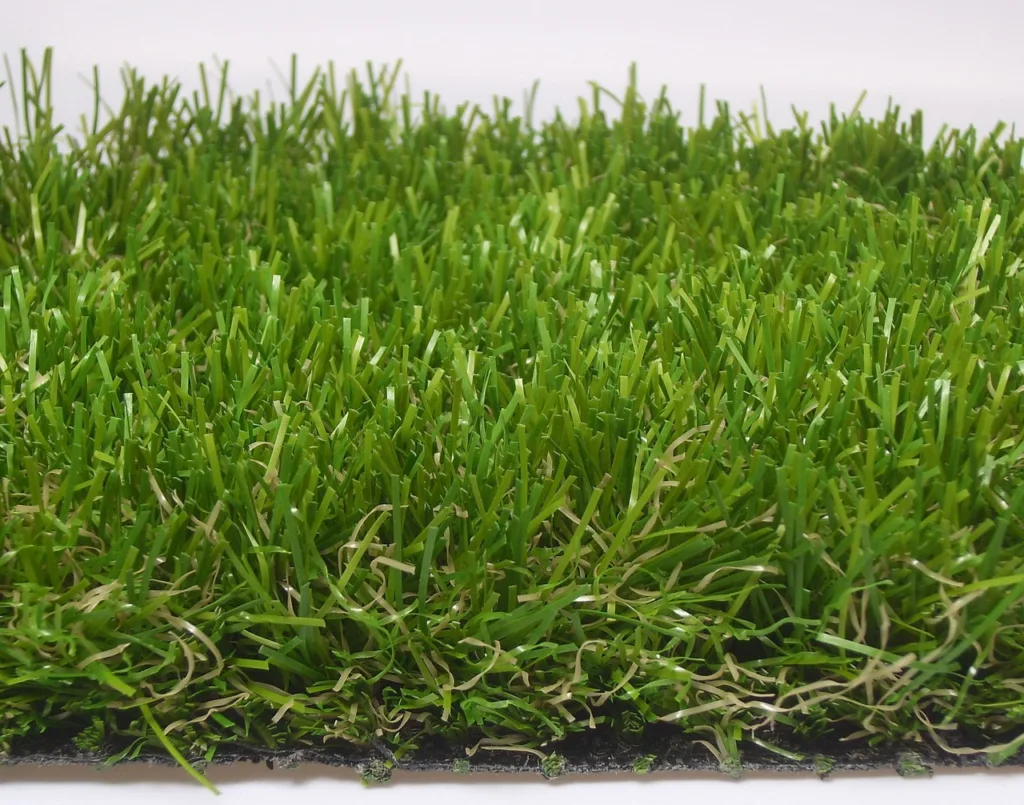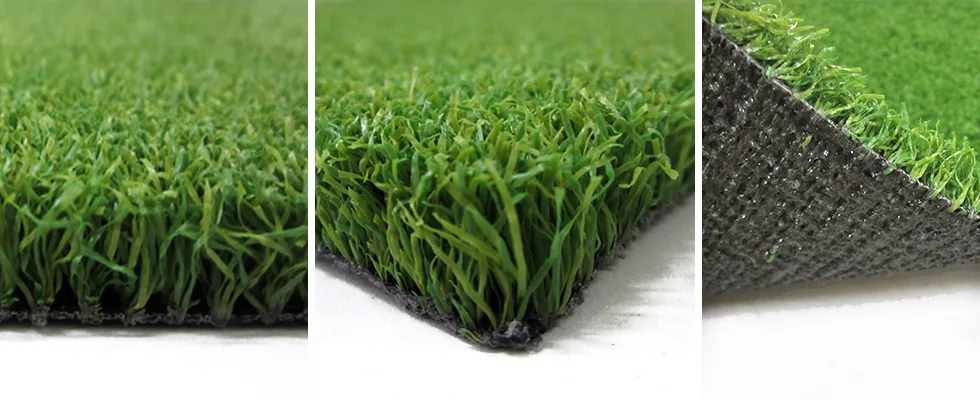Artificial grass and turf are two terms that are often confused with each other, but they are different products.
Knowing the differences between the two can help you choose the right option for your landscaping needs.
In this article, we will explain the unique characteristics, applications, and benefits of both artificial grass and turf.
Artificial Grass: The Synthetic Solution
Artificial grass, also referred to as synthetic or fake grass, is an artificial surface created to replicate the appearance and texture of natural grass.
It is made from synthetic fibers such as polyethylene, polypropylene, or nylon, and offers a low-maintenance option to natural grass lawns.
The following are some of the essential characteristics of artificial grass:

Material Composition
Artificial grass is typically constructed from durable synthetic materials that are resistant to wear and tear.
These materials are engineered to withstand harsh weather conditions and heavy foot traffic, making artificial grass an ideal option for high-traffic areas such as sports fields and playgrounds.
Appearance and Texture
One of the primary advantages of artificial grass is its realistic appearance. Modern artificial grass products are designed to closely resemble natural grass, with a soft texture and vibrant green color that can enhance the aesthetic appeal of any outdoor space.
Low Maintenance
Unlike natural grass, artificial grass requires minimal maintenance. It does not need to be watered, mowed, or fertilized, which can save you time and money in the long run.
Additionally, artificial grass is resistant to pests and diseases, eliminating the need for harmful pesticides.
Versatility
Artificial grass can be used in a variety of applications, from residential lawns to commercial landscaping projects. It is also commonly used in sports facilities, golf courses, and pet areas due to its durability and versatility.

Turf: The Athletic Alternative
Turf is a type of artificial grass that is exclusively designed for sports fields and athletic surfaces.
Unlike regular artificial grass, turf is specifically engineered to meet the performance requirements of athletes and sports enthusiasts. Here are some important differences between artificial grass and turf:
Infill
One of the main distinctions between artificial grass and turf is the infill material used in the installation process.
Turf typically contains a layer of rubber or sand infill that provides shock absorption and cushioning, making it ideal for sports like football, soccer, and baseball.
Pile Height
Turf often has a shorter pile height compared to regular artificial grass, which helps to enhance traction and ball roll for sports activities.
The shorter fibers of turf are specially designed to optimize performance on the field and reduce the risk of injury for athletes.
Durability
Turf is engineered to withstand the rigorous demands of athletic use, with enhanced durability and resilience.
The specialized construction of turf makes it resistant to damage from cleats, sports equipment, and intense play, ensuring long-lasting performance on the field.
Performance
Another key difference between artificial grass and turf is the level of performance they offer. Turf is specifically designed to enhance athletic performance by providing consistent playing conditions, excellent traction, and shock absorption. This makes turf the preferred choice for professional sports venues and recreational facilities.

Conclusion
In conclusion, artificial grass and turf are distinct products that serve different purposes and applications. While artificial grass is a versatile landscaping solution that provides aesthetic appeal and low maintenance, turf is a specialized surface designed for athletic use with enhanced performance features.
By understanding the differences between artificial grass and turf, you can choose the option that best suits your needs and preferences.
Whether you are looking to create a lush green lawn or a high-performance sports field, both artificial grass and turf offer unique benefits that cater to a variety of outdoor environments.
FAQs
Is artificial grass better than turf?
The terms “artificial grass” and “turf” are often used interchangeably. In general usage, both refer to synthetic surfaces designed to mimic natural grass.
So, there isn’t a clear distinction where one is better than the other. However, in some contexts, “turf” might be used to refer to artificial grass used in sports fields. Ultimately, the choice between artificial grass and turf depends on specific needs and preferences.
Is turf cheaper than artificial grass?
In most cases, the terms “turf” and “artificial grass” refer to the same synthetic grass material. Therefore, there is no inherent cost difference between the two.
The cost of synthetic grass depends on factors such as quality, brand, and installation requirements. Prices can vary, and it’s recommended to obtain quotes from local suppliers and contractors to determine the most cost-effective solution based on your specific needs.

